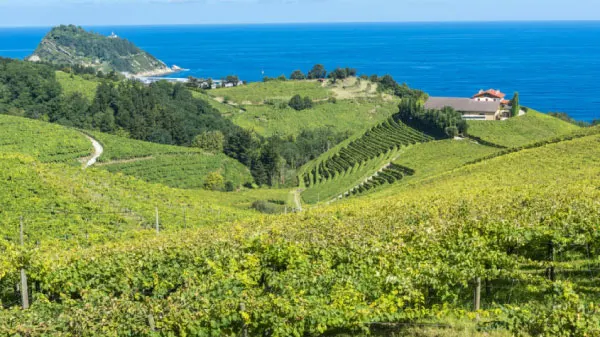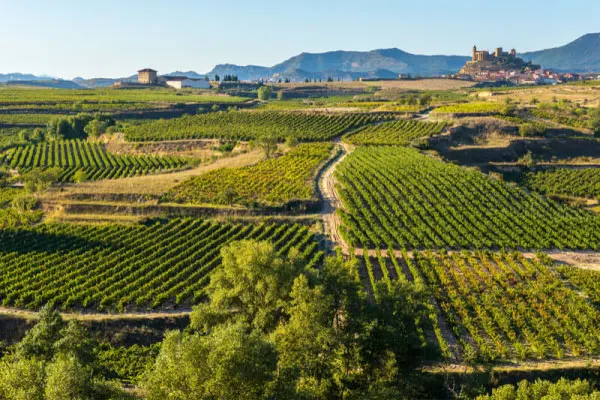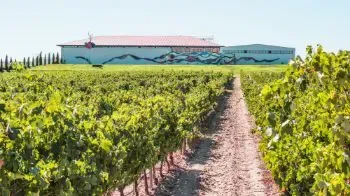Spain is the country with the largest area for growing vines in the world and also the third largest wine producing market. Since 1990, the country has undergone some important transformations in the field of viticulture, above all, it has modernized and adapted itself more to the market.
Spain
Spain's history in relation to wine is quite old. It started at the time when the Romans dominated the Iberian Peninsula, but, long before that, there were already vines in the region. There are even records that they have been cultivated there since 4000 or 3000 BC.
Since 1990, the Spanish wine industry has undergone profound transformations, greater than those that have occurred in previous centuries. There was a considerable process of modernization, which was not limited to the field, it also included all the sector's regulations and today the country is the birthplace of some of the most prestigious wines in the world.
Today, Spain has the largest area of vineyards in the world and is the third largest producer of wines, occupying most of the Iberian Peninsula. A large portion of its territory is on a central plateau, located at altitudes ranging between 600 and 1000 meters above sea level and surrounded by mountain ranges. Soil types and climates vary widely from region to region.

Image: Living Tours
Spain’s Terroir
Spain is divided into three zones: Northwest, Northeast, and Center and South.
The Northwest consists of the cold coastal areas of Galicia and Castilla y Leon. Here the climate is cold and humid and the soil is granitic.
The Northeast includes La Rioja, Aragón, Navarra and Catalonia. In this part of the country, the soil is sandy over clay and the climate is Mediterranean, with warm areas due to the sea coast and moderate rainfall.
The Center and South includes Madrid and Estremadura, Castilla La Mancha, Valencia and Murcia, Andalusia, and the Canary Islands. In this region of Spain, the soil is composed of sand or clay on limestone and a lot of lime in the West. The climate, on the other hand, is dry and hot in the summer and the winters are very cold.
Spanish Wine Regions
Spain is the country with the largest area of vineyards in the world, being distributed throughout its territory, so it is not surprising that there are many producing areas. The wine map of Spain is divided into several macro-regions: Valencia, Navarra, Aragon, Catalonia, Basque Country, Galicia, Castilla y León (which has one of the most important DO Ribera del Duero), La Rioja, Castilla La Mancha, Andalusia, Estremadura, Murcia, Madrid, Canary Islands and Balearic Islands.
Valencia: there are three different appellations of origin and each produces different types of wine. The climate is warm and contributes to the ripening of the grapes, and it is common for the harvest to be done earlier than in other regions. Mistela wine or Licor Moscatel is very popular and is still produced today using traditional methods.
Navarra: for many years it lived in the shadow of its neighbor Rioja, producing quality rosés. It is divided into five sub-regions: Valdizarbe, Tierra Estella, Ribera Alta, Baja Montaña and Ribera Baja.
Aragón: there are four DO in the two provinces in this area: Campo de Borja, Calatayud and Cariñena in the province of Zaragoza and Somontano in the north, in the province of Huesca.
Catalonia: it has eleven DO zones, more than any other Spanish region. The largest and most important, with 27,500 hectares, is Penedés, in the province of Barcelona. The second in importance is Priorat, one of the smallest, with 1,800 hectares, located in the province of Terragona. This region also has something unique: Cataluña DO, made official in 1999, which allows you to combine DO wines from various Catalan regions, without losing DO status.
Basque Country: the region's individuality, known for its independence from the rest of the country, ends up also manifesting itself in the wine produced there. The so-called Txakolí has unique characteristics, very different from what is known as Spanish wine. It is usually consumed as an aperitif or with seafood.
Galicia: it has five DO zones: Rias Baixas, Ribeiro, Valdeorras, Ribeira Sacra and Monterrei.
Castilla y Leon: former heart of Castilian Spain, it occupies one fifth of the country. It has five DO zones: Ribera Del Duero, Rueda, Toro, Cigales and Bierzo. Ribera del Duero is probably the most important of the Spanish denominations, it is protected from any maritime influence by a mountain range.
La Rioja: located in the north of Spain, La Rioja is divided into three zones: Rioja Alta, Alavesa and Rioja Oriental. With more than 65,000 hectares, this region also has a diversity of soils and microclimates which means that wines with unique characteristics can be created.
Castilla La Mancha: it has an enormous potential and large volumes of wines are produced here.

Image: Mi Viaje
Andalusia: this is where the famous Jerez wine is produced.
Extremadura: in this region is the DO Vinos de Madrid.
Murcia: known worldwide for its excellent wines, especially the red DO Jumilla. It has three appellations of origin: Jumilla, Bullas and Yecla.
Madrid: it is the only capital in the world that has its own designation of origin. It is divided into three zones: Arganda, Navalcarnero and San Martin de Valdeiglesia where white, red and rosé wines are produced.
Canary Islands: production varies between wines of excellent quality, made in small quantities from local grape varieties by small producers, and wines made in large wineries with a view to the foreign market.
Balearic Islands: they are an old producing region, although only in Mallorca there are vineyards.
Types of Spanish Wine
The classification system for the Spanish wine is organized into two main groups, each with its own sub-groups, and are administered by each autonomous region. When the regions overlap the limits, they are administered by the Instituto Nacional de Denominaciones de Origen (INDO), located in Madrid. The Spanish types of wine are:
- Vinos de Calidad Producidos en Regiones Determinadas (VCPRD): geographical indication that guarantees the origin and quality of wines throughout the European Union.
- Vinos de Pago (DO de Pago): includes prestigious wines with distinctive characteristics from a specific rural location or place, that is, wines produced in a given area when there is a particular microclimate and soil composition that distinguish it from other parts of its environment.
- Vinos con Denominación de Origen Calificada (DOC): it is reserved for wines that have reached high levels of quality over a long period of time.
- Vinos con Denominación de Origen (DO): prestigious wines from a defined production area and with a well-studied and regulated production, governed by a Regulatory Council.
- Vinos de Calidad con Indicación Geográfica: wines produced in a specific region that intends to become a DO.
- Vinos de Mesa (VDM): these are generic and light wines, often drunk during a meal. They may not show the production area, the types of grapes used or the year of the vintage on the label. In exceptional cases, some wines can be classified as table wines if they are produced with non-traditional types of grapes or if their production process is not normal.
- Vino de la Tierra (VdlT): wines from a specific wine area where they are produced under a set of rules that are not as restricted as the Regulatory Councils of the DOs. Unlike table wines, the indication of the vintage on the label is allowed, as well as the grape varieties used and the production area.
Regarding the aging of the harvest in barrels or bottles, Spanish wine can be:
- Joven (also known as Vino Del Año): it is a wine with little aging time, put on the market in the same year or, at most, in the year following the harvest. Its main feature is that it is fresh and fruity.
- Crianza: the legislation requires an aging of at least 2 years. If it is red, at least one year in oak barrels is required; if white, 6 months.
- Reserva: only wines produced from exceptional grape varieties can be classified as such. As for aging, it takes 3 years for reds and 18 months for whites, with the need for the red to stay 12 months in oak barrels and the white 6 months (like Crianza).
- Gran Reserva: like the Reserva, it requires an exceptional grape variety. Red aging must be at least 5 years old and whites should be 4 years old. The red must stay 18 months in oak barrels and the white the same 6 months as the Reserva.
Spain Grape Varieties
Despite the fact that more than 600 grape varieties are grown in Spain, Tempranillo and Albariño account for about 80% of production. Although most of the vineyards planted in the country are white grape varieties, the popularity of Spanish wines is strongly linked to red grapes.
Red Grapes
The most planted grape in the Spanish territory is Tempranillo, which, depending on the region, can be identified with other names: Tinto Fino, Tinta del País, Tinta de Toro and Oull de Llebre. Their wines usually have notes of strawberry, currant, plum, chocolate and tobacco. Garnacha is the second most planted grape variety in the country, mainly in the North and West. Its vines are strong and structured, resistant to drought and strong wind.
Graciano is another red grape renowned in the Spanish territory, being grown mainly in the regions of Rioja and Navarra. The aroma is strong, being highly appreciated in the production of blends with Tempranillo and Cabernet Sauvignon.
White Grapes
Moscatel is a sweet grape, widely used to make liqueur wines. In Spain, a good part of the good sweet wines made with Moscatel come from the region of Andalusia.
Xarel-lo is one of the most indicated in the production of Charmat sparkling wines, mixing with other varieties. It originates in Catalonia, where it is indigenous.
Verdejo produces many wines in Rueda, central Spain. Its wines are produced mostly in varietal, or mixed with the varieties Viura and Sauvignon Blanc.
 Portugal
Portugal Spain
Spain France
France Germany
Germany United Kingdom
United Kingdom Monaco
Monaco



